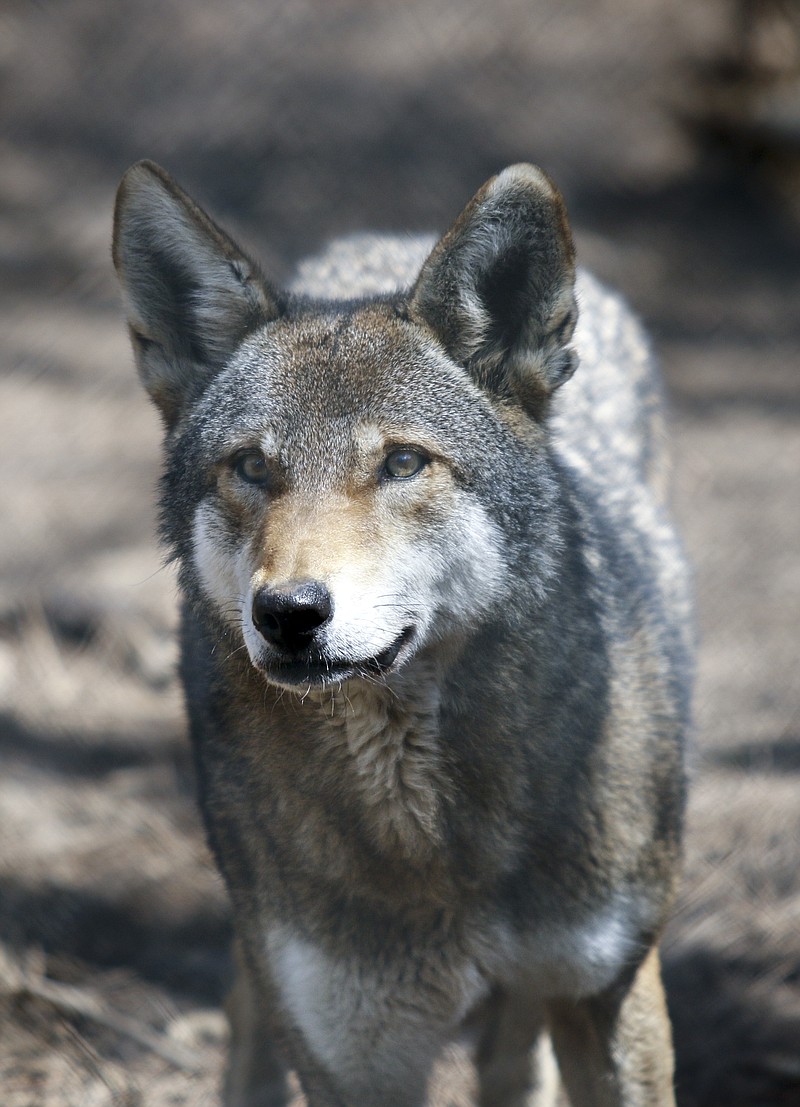Read more
Nature center raising red wolf pups, but they may have no place to go if North Carolina ends a reintroduction program
It may be too soon to know if the endangered red wolf breeding program at Chattanooga's Reflection Riding Arboretum & Nature Center is in trouble.
Trouble not because of problems here, but problems with the North Carolina Wildlife Resources Commission and that state's red wolf reintroduction program in five low-lying counties in coastal eastern North Carolina.
Apparently hunters and residents in North Carolina are not happy with the wolves' reintroduction.
"We have had numerous accounts of depredations on livestock and pets," wildlife commission spokesman Geoff Cantrell said.
Well -- really, now. Just what did people expect when they agreed and planned the reintroduction of wolves? But the real question now is how to get to the bottom of disputed facts. And the real goal should be to prevent this reintroduction program from becoming as endangered as the red wolf itself.
Because now, after decades of work and success, the North Carolina wildlife officials want the federal government to give up, declare the red wolf extinct and end the animal's reintroduction there.
Other wildlife experts and environmentalists say that would be so unfortunate. And they are right.
The North Carolina experimental preserve now harbors the world's only wild, free-ranging population of red wolves, and the red wolf is possibly North America's most endangered mammal. The red wolf, which roamed the Southeast in great numbers, has been pushed to near-extinction through hunting and habitat loss.
The red wolf was listed as endangered in 1967, and a breeding in captivity program began in 1977 in Washington state. The first litter of red wolf pups was born in the wild in North Carolina in 1988. Today, with the help of other in-captivity breeding centers like ours at Reflection Riding, more than 100 red wolves roam eastern North Carolina and another 200 are kept in captive breeding facilities, according to experts with the U.S. Fish and Wildlife Service.
Environmentalists are fighting the North Carolina officials. Jeremy Hooper, a University of Tennessee at Chattanooga biological and environmental sciences student who previously cared for Chattanooga's wolves and now is doing a master's project on coyote-human interaction in the Atlanta area, disputes the North Carolina Wildlife Resources Commission's claim that the wolves compete for the same game as human hunters.
He says North Carolina's hunting harvest figures show that hunters there have taken more deer and turkey where the wild red wolves live, thanks to what experts call the "ecology of fear" -- wolves hunting deer makes the deer move around more and not overgraze a particular area. Further, the wolves remove older, weak and sick animals, making the herd stronger in the long run.
Hooper blames the resident anger on failure of coordination between North Carolina wildlife officials and a federal judge's ruling to ban shooting coyotes around the wolves. The two animals are quite similar, and although wolves are larger, they were being mistaken for coyotes and killed.
Not being able to shoot the coyotes is what drove residents to anger, Hooper told Times Free Press reporter Tim Omarzu. The judge's ruling since has been modified to allow daytime hunting of coyotes on private land with a permit.
But the unintended consequence is that now the red wolf reintroduction program, like the wolf, is endangered.
As Hooper says: "It's a big deal. The only place they will exist is in captivity if they're removed from the wild."
That should not happen.
